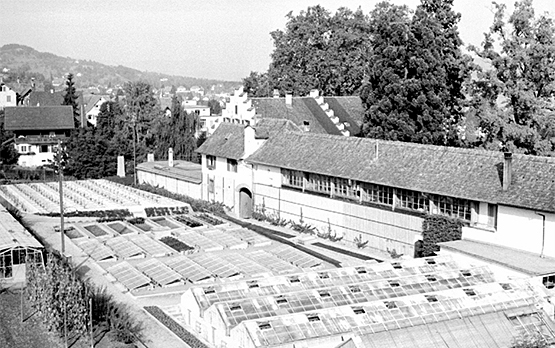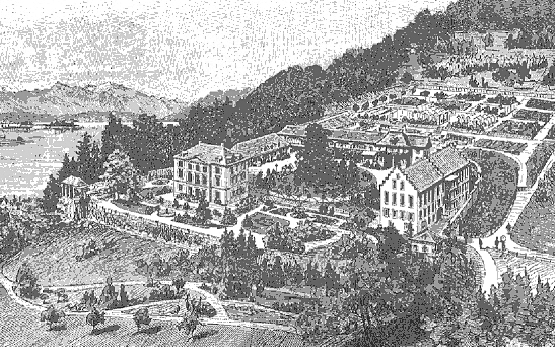Article by Sybille Zollinger from the 12 August 2000 issue of the Zürichsee-Zeitung:
Wädenswil Castle: Once the seat of the Landvögte (bailiffs or provincial governors), today a bastion of cutting-edge research. Historian Peter Ziegler devotes 75 pages of his book to the colourful history of the Castle.
Wädenswil Castle is not just a tradition-steeped research institute for fruit production, viticulture and horticulture; walking through the facility, you breathe in the scent of history that contrasts sharply with the future-oriented research work conducted behind the doors of the old buildings.
Peter Ziegler traces this history in his book Schloss Wädenswil - Vom Sitz der Landvögte zur Eidgenössischen Forschungsanstalt (‘Schloss Wädenswil – from Seat of the Bailiffs to Swiss Federal Research Station’). A historian, Ziegler devotes the first, most comprehensive section of his book to the origins of the castle and its bailiff residents. The second section, which includes an art-history perspective, deals with the architectural history of the castle. The third and final part documents the origin and development of the research station, and concludes with a look into the future.
250 Years as a Bailiwick
In the 16th century, the Council of Zurich managed to consolidate its position on the upper left bank of Lake Zurich at the expense of the Order of St. John. Zurich acquired the commandery of Wädenswil and annexed it as a bailiwick to the city-state. Since Schwyz and Glarus feared that Wädenswil could serve as a base for military action, the castle was razed and another one built close to the village in its stead. For 250 years, the bailiffs ruled from here. The bailiwick of Wädenswill was highly popular with upper-class contenders for power from Zurich.
Wädenswil as an Elite Training Centre
Wändenswil was said to be a career-launcher, promising wealth to and conferring prestige on its inhabitants. It was also easy to reach by boat from Zurich. Last but not least, Wedenschwyler were reputed to be a frolicsome lot.
After the 1798 Helvetic Revolution and the end of the bailiwick, the castle was declared a national asset and leased to the municipality of Wädenswil. For two years it housed a boy’s institute, a project which eventually foundered. The year 1804 marked a fateful event in the castle’s history, when Wädenswil firebrands torched the main building, and the splendid structure burned down completely. The event had a signal effect for the Bocken War, a peasant uprising against the conservative Zurich government. In 1816, the distinguished Zurich architect Conrad Stadler commenced construction of the classicist-style castle that stands today.
The Research Station Comes into Being
In 1890 the ‘Swiss-German Experimental Station for Fruit Production, Viticulture and Horticulture’ was established in the castle, which had been in private ownership for several decades at this point. The first director of the research station, Hermann Müller-Thurgau, subsequently became famous as the main pioneer of applied botany. He created the first scientific vine crossings, including the breeding of the Riesling x Sylvaner grape variety, which gave its name to the white wine pressed from it. In the 1990s, genetic analyses showed that Müller-Thurgau had in fact made a mistake; he had crossed the Riesling vine with the Royal Magdalener vine, instead of with the Sylvaner.
Over the following 110 years right up to the present, the research station – rechristened the "Swiss Federal Research Institute" in 1968 – has developed into an institution with a global reputation. Not only is Ziegler’s book a meticulous description of 500 years of castle history, approached from different perspectives, but he succeeds time and again in contextualising this description in regional and national events in a highly stimulating manner – making the book a worthwhile read not just for castle-lovers, but for the wider public.
Schloss Wädenswil by Peter Ziegler was published in August 2000. It costs CHF 36, and can be ordered from the publishers, Verlag Stutz Druck AG, CH-8820 Wädenswil, Switzerland, www.stutz-druck.ch.







